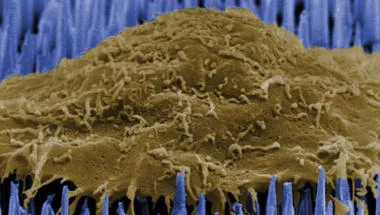
Dr Valeria Caprettini
Postdoctoral Research Associate
Biography
Valeria Caprettini was born in Rome, Italy. She received her Bachelor and Master Degree in Physics at Sapienza – University of Rome, Italy, with specialization in Physics of the Biosystems. Her thesis project was in collaboration with the microbiology department and the biochemical department of the University of Sacred Heart in Rome. The project aimed at developing and characterizing a Virus-Like Nanoparticles for drug delivery purposes. After her MSc, she moved to the EMBL in Heidelberg, Germany, for an internship in which she joined a research on the study of Nuclear Pore Complex and the mechanisms that regulate the traffic of molecules through the nuclear envelope. In 2018 she successfully accomplished a PhD in Bioengineering with specialization in bio-nanotechnologies in the Plasmon Nanotechnology group at the Italian Institute of Technology (IIT) in Genoa, Italy. During her PhD, she studied the interface between biological samples, in particular cultured cells, and out-of-plane nanostructured surfaces with application in different fields such as optoacoustic and electrical poration, drug delivery, recording of action potentials and spectroscopic analysis of extra- and intra-cellular environment.
In 2018, she joined Dr. Chiappini’s lab as a postdoctoral research associate and she is now developing a platform to direct stem cell behaviour and stem cell differentiation by engineering their environment.
In 2019 she was awarded a Research Experience Placement (REP) grant for developing a light scanning system.
Research

Chiappini Lab
Nanotechnology, bioengineering and cell biology to develop functional materials that direct cell behaviour, for applications in regenerative and precision medicine.
Research

Chiappini Lab
Nanotechnology, bioengineering and cell biology to develop functional materials that direct cell behaviour, for applications in regenerative and precision medicine.
